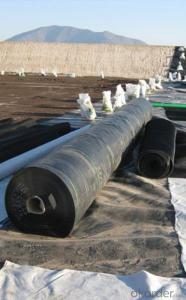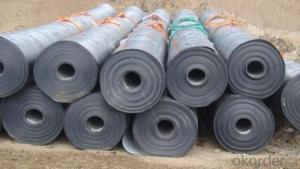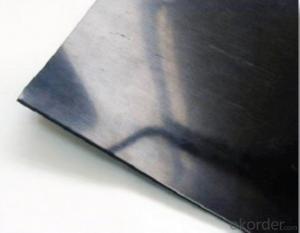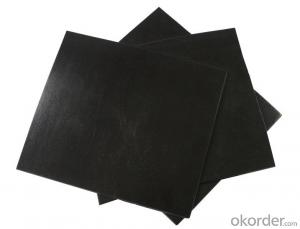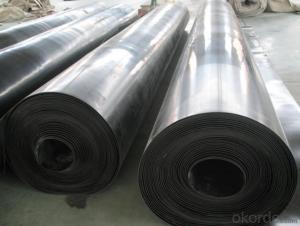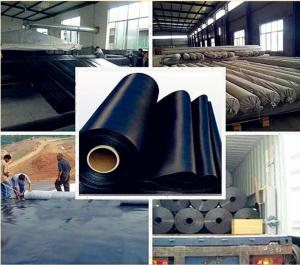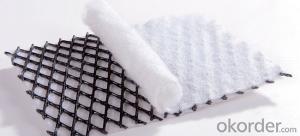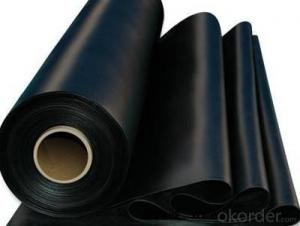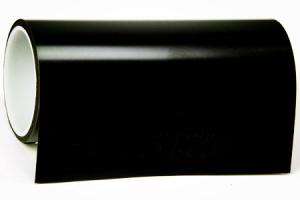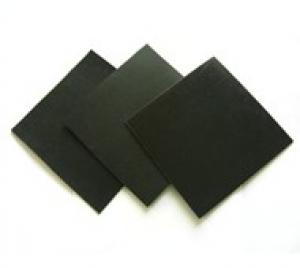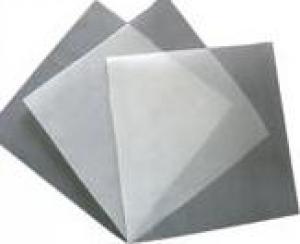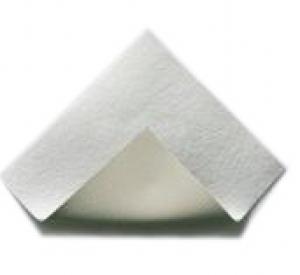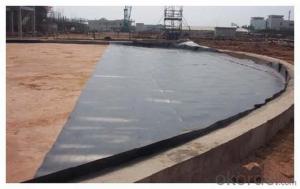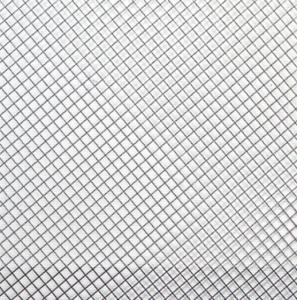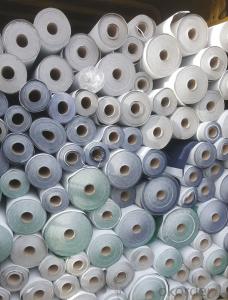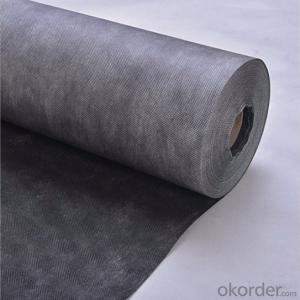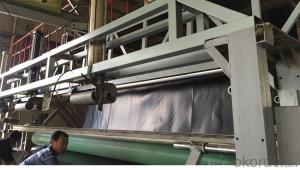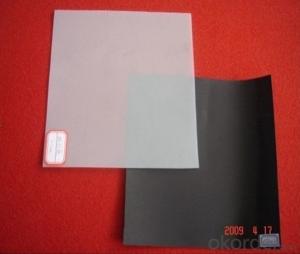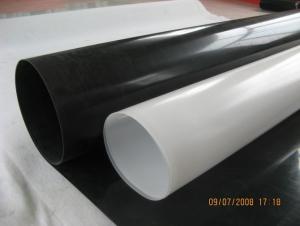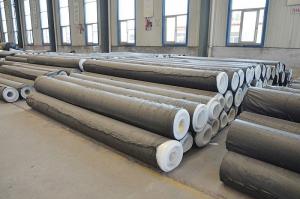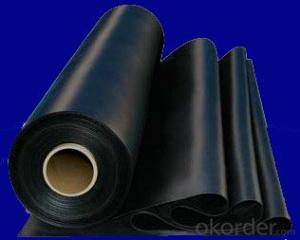Geomembrana 0.8-3 mm of New HDPE For Highway
- Loading Port:
- Qingdao
- Payment Terms:
- TT OR LC
- Min Order Qty:
- 5000 m²
- Supply Capability:
- 100000 m²/month
OKorder Service Pledge
OKorder Financial Service
You Might Also Like
Geomembrana 0.5-2.5 mm of New HDPE Made in China
Description Of Geomembrana 0.5-2.5 mm of New HDPE Made in China
The plastic film is used as the material of the plastic film as the anti - material, and the material of the non - woven fabric is made from the non - woven fabric. Its anti - permeability performance depends mainly on the anti - leakage performance of plastic film. At present, the domestic and international impermeable plastic film, mainly (PVC) and polyethylene (PE), EVA (ethylene / vinyl acetate copolymer), the tunnel application is also designed to use ECB (ethylene vinyl acetate modified asphalt blend membrane), they are a kind of high molecular weight chemical flexible material, the proportion is small, the extension is strong, the ability to adapt to deformation, corrosion resistance, low temperature resistance, frost resistance.
Main Features of Geomembrana 0.5-2.5 mm of New HDPE Made in China
Polyethylene (PE) geomembrane is divided into low-density polyethylene (LDPE) geomembrane
Applications of Geomembrana 0.5-2.5 mm of New HDPE Made in China
Low density polyethylene geomembrane for transport facilities
IMages of Geomembrana 0.5-2.5 mm of New HDPE Made in China
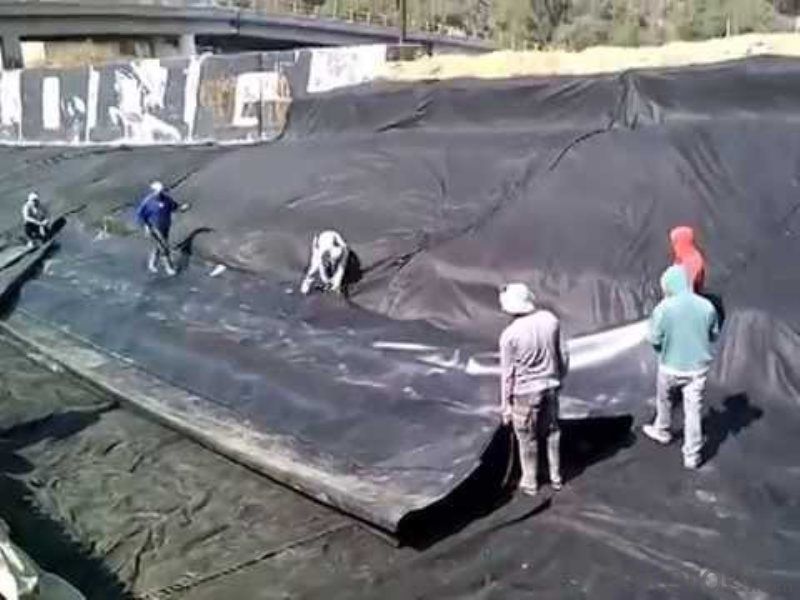
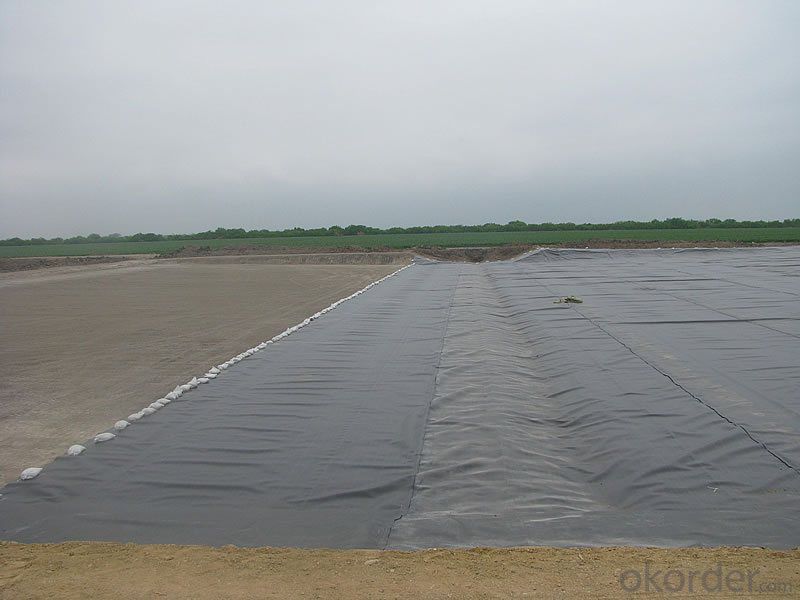
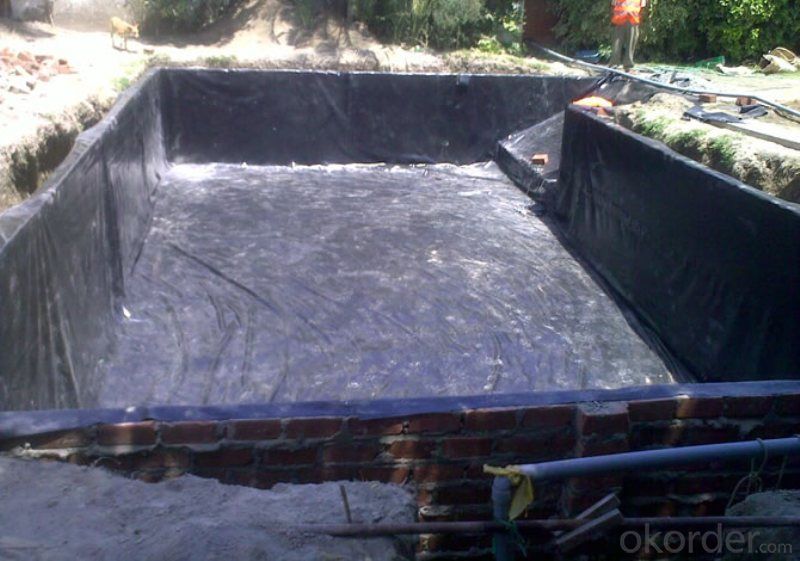
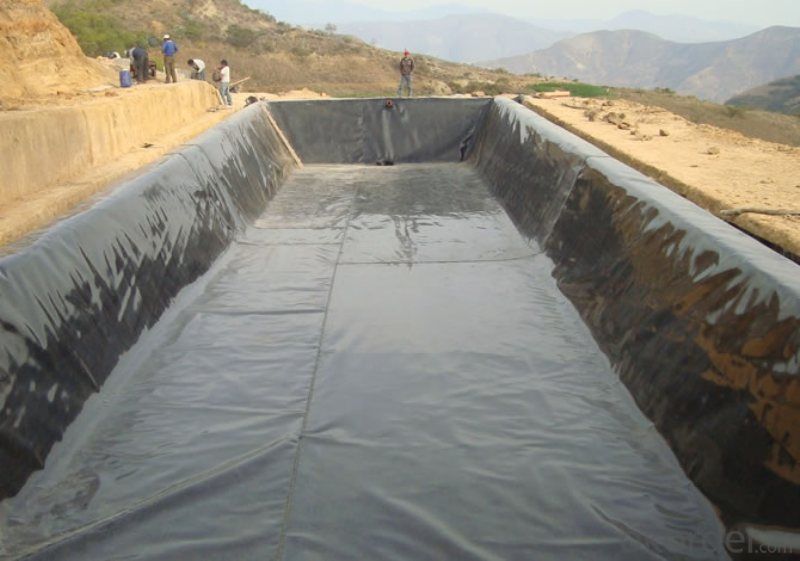
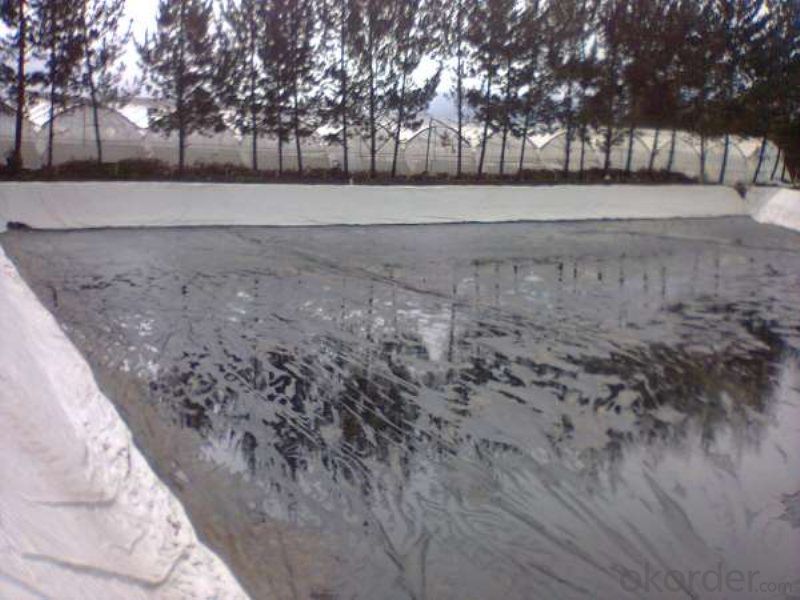

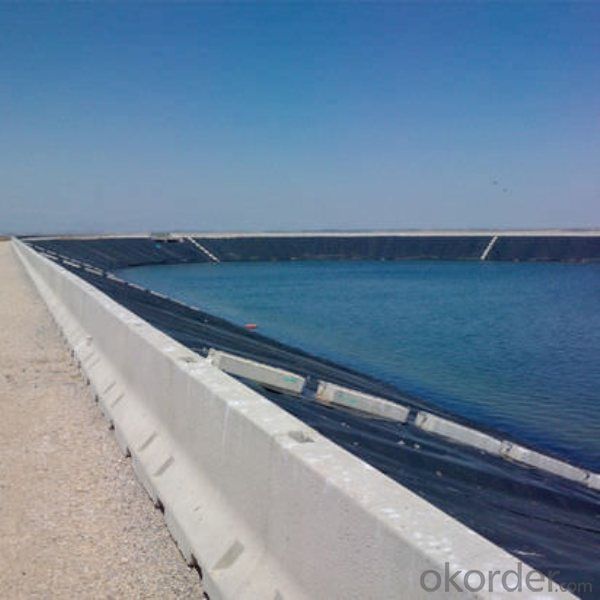
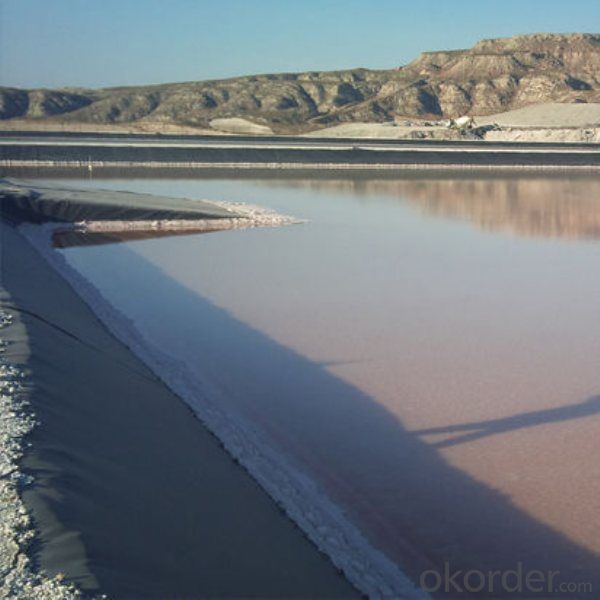
FAQ:
1. What are we supplying?
We are specialized in producing .geotextile , geocell, geogrid, geomembrane
2. How Many years experience do we have?
We have been exported to more than 15 countries in the past 10 years.
3. How long do we usually reply your request?
We always reply our customer within 12 hours.
- Q:What is geotextile?
- Geotextile: It is a kind of coiled material used in the field of Civil Engineering, which is wove by synthetic fiber or made of non-woven technology such as adhesion bond and hot-pressing needling, also known as geotextile fiber or geomembrane.
- Q:Can geomembranes be used in decorative landscape designs?
- Yes, geomembranes can be used in decorative landscape designs. They can be used to create ponds, water features, retaining walls, and other decorative elements. Geomembranes provide a waterproof barrier that helps to prevent leaks and maintain the integrity of the design. Additionally, they can be easily hidden or covered with natural materials to blend seamlessly into the landscape.
- Q:How are geomembranes used in pond liners?
- Geomembranes are used in pond liners to provide a durable and impermeable barrier that prevents water from seeping into the surrounding soil. This helps to maintain the water level in the pond, prevent erosion, and protect the environment from potential contamination.
- Q:What are the characteristics of membrane touch switch?
- It has the characteristics of small volume, powerful function, stability and convenient operation.
- Q:How do geomembranes contribute to water conservation?
- Geomembranes contribute to water conservation by acting as impermeable barriers that prevent water from seeping into the ground. They are frequently used in various water containment applications such as reservoirs, ponds, and canals, effectively reducing water loss through seepage and evaporation. Additionally, geomembranes are often employed in lining systems for landfills, preventing the contamination of groundwater by leachate. Overall, by minimizing water loss and contamination, geomembranes play a crucial role in conserving water resources.
- Q:Brief introduction of geomembrane
- The geomembrane is a kind of waterproof barrier material, which takes the high-molecular polymer as the basic material. Mainly divided into: Low density polyethylene (LDPE) geomembrane, high density polyethylene (HDPE) geomembrane and EVA geomembrane. 1, complete in specifications of width and thickness. 2 has excellent resistance to environmental stress cracking and excellent resistance to chemical corrosion. 3, excellent resistance to chemical corrosion. 4 has a larger using temperature range and a longer service life. 5, used in the refuse landfill, tailings storage yard, channel seepage-proofing, dam seepage-proofing and subway projects, etc.. Physical mechanical properties of geomembrane Varieties index item LDPE geomembrane HDPE geomembrane EVA ordinary type environment friendly type tensile?strength (vertical and horizontal) (MPa) ≥14 ≥17 ≥25 ≥18 breaking elongation rate (vertical and horizontal) (%) ≥400 ≥400 ≥550 right angle tear strength vertical and horizontal) (N/mm) ≥50 ≥80 ≥110 ≥90 water vapor penetration coefficiency (g.cm/cm.s.pa) ) ≤1.0x10-16 ≤1.0x10-16 ≤1.0x10-16 ≤1.0x10-16 using temperature range +70℃~-70℃ +70℃~-70℃ +70℃~-70℃ +70℃~-70℃ environmental stress cracking resistance (F20.H) - - ≥1500 - 200℃ oxidation induction time (min) ) - - ≥20 -
- Q:What is the carbon resister
- Carbon film resistor is a kind of film resistor. It adopts a high temperature vacuum coating technology to closely attached to the surface of the ceramic rod carbon film, and then add the appropriate joint cutting, and coated with epoxy resin to seal for protection. The surface is usually painted with green paint. the thickness of carbon film depends on resistance size, it is usually used the film thickness and the groove to control the resistor.
- Q:What are the factors to consider when selecting a geomembrane?
- When selecting a geomembrane, there are several important factors to consider. These include the specific application or project requirements, such as the type of containment or barrier needed, the expected environmental conditions, and the desired lifespan of the geomembrane. Other factors to consider include the material properties, such as strength, flexibility, and chemical resistance, as well as installation considerations like ease of handling and installation methods. Additionally, cost, availability, and the reputation of the manufacturer or supplier should also be taken into account. Ultimately, it is crucial to carefully evaluate all these factors to ensure the selected geomembrane will meet the project's needs and deliver long-term performance.
- Q:Is non-woven composite geomembrane same to geomembrane?
- the mixed application of geotextile and geomembrane reaches the engineering requirements. Firstly, introduce geotextile: Geotextile is a kind of new construction materials in civil engineering, silk or short fiber are paved in nets through equippments and technology, then the needle puncture technology will make fabrics interwoven together, making the fabric standardization, making the fabric soft, full, thick, hard and satisfy the thickness requirements, short fiber geotextile or short fiber geotextile's tear-resistance strength is higher than short fiber. fiber is soft and has certain tear-resistance ability. main function: Filtration, drainage, reinforcement function specification 100 grams per square meter, 800 grams per square meter, it's main material polyester fiber has excellent water permeability, filtration, durability and ability to adapt to deformation, and surface drainage capacity. geomembrane plastic film as seepage-proof base material, the seepage-proof performance of non-woven composite soil engineering impermeable material, two cloths and membranes mainly depends on the seepage-proof performance of plastic film. geomembrane is a kind of flexible?material polymeride basic material, high waterproof material proportion, good extensibility,high?adaptability?to the?deformation, corrosion resistance, low temperature resistance, frost resistance.
- Q:What are the advantages and disadvantages of ceramic and metal film membrane?
- (1) metal film in the 1990s is developed by the United States. it is mainly a porous and stainless steel substrate, TiO2 ceramic coating material is a new type of metal - ceramic composite inorganic membrane. (2) the advantages of a metal film is good ductility, toughness and strength, as well as adaptability to environment and material. It is one of the best film material after a ceramic membrane is developed. Ceramic membrane material is acid and akali resistance, anti chemical solvents, high temperatures resistant, especially with high mechanical strength, long service life. It has obvious advantages in harsh environments. The disadvantage is that the application of ceramic membrane is not wide enough, although it is nanoscale separation precision. ceramic membrane has a small market, but there is no ceramic membrane that can not filter. .
1. Manufacturer Overview |
|
|---|---|
| Location | |
| Year Established | |
| Annual Output Value | |
| Main Markets | |
| Company Certifications | |
2. Manufacturer Certificates |
|
|---|---|
| a) Certification Name | |
| Range | |
| Reference | |
| Validity Period | |
3. Manufacturer Capability |
|
|---|---|
| a)Trade Capacity | |
| Nearest Port | |
| Export Percentage | |
| No.of Employees in Trade Department | |
| Language Spoken: | |
| b)Factory Information | |
| Factory Size: | |
| No. of Production Lines | |
| Contract Manufacturing | |
| Product Price Range | |
Send your message to us
Geomembrana 0.8-3 mm of New HDPE For Highway
- Loading Port:
- Qingdao
- Payment Terms:
- TT OR LC
- Min Order Qty:
- 5000 m²
- Supply Capability:
- 100000 m²/month
OKorder Service Pledge
OKorder Financial Service
Similar products
New products
Hot products
Hot Searches
Related keywords
